In his book Enneagram Transformations, Don Riso suggests a series of Transformative Psychological Affirmations and that we might want to reflect on, as well as modify so that they land better with our own psyche and then read them aloud (maybe even on a daily basis).
Here are his suggestions for using the Transformations:
“People have found a variety of ways to incorporate these Transformations in their lives. Some have found it helpful to read them in the morning as part of their daily prayer or meditation, while others have found it useful to read them at night before going to sleep. Whenever you choose to read them, try to find a time when you will not be distracted and are receptive to what they evoke in you.
It is helpful to read the Transformations aloud, as this is an effective way of reprogramming your subconscious. With repetition, you will find that you may have memorized some of the Transformations and that they will spontaneously occur to you. You may want to hold an Affirmation or a Release in mind during stressful moments by repeating it several times in the manner of a prayer or mantra to shift your attention to something positive and helpful.”
THE TRANSFORMATIONS (listed by Enneagram Type)
PERSONALITY TYPE ONE: The Rational, Idealistic Type
 ONES TRY TO ESCAPE from their fear of being condemned by striving to be perfect. They see themselves as fair, reasonable, and objective, although others may see them as rigid, dogmatic, and overly critical. Ones believe that if they discipline themselves sufficiently, they can avoid making mistakes. Being human, however, they do make mistakes—obliging them to struggle ever harder to organize and improve everything in their lives. If they see that others do not share their idealism, Ones increasingly become unable to control their anger about having to do everything themselves. If Ones continue pushing themselves toward “perfection,” the repressed parts of their psyches explode, leaving them enraged and irrational.
ONES TRY TO ESCAPE from their fear of being condemned by striving to be perfect. They see themselves as fair, reasonable, and objective, although others may see them as rigid, dogmatic, and overly critical. Ones believe that if they discipline themselves sufficiently, they can avoid making mistakes. Being human, however, they do make mistakes—obliging them to struggle ever harder to organize and improve everything in their lives. If they see that others do not share their idealism, Ones increasingly become unable to control their anger about having to do everything themselves. If Ones continue pushing themselves toward “perfection,” the repressed parts of their psyches explode, leaving them enraged and irrational.
ONES CAN ESCAPE THEIR EGO CAGE by acknowledging and releasing their unrealistic expectations of themselves and others. They begin to understand that the standards by which they judge the world are not absolute truths. As Ones recognize the subjective quality of many of their positions, they begin to respect the beliefs and values of others. Without the constraints of perfectionism, their vision opens to a reality more mysterious and more perfect than they could ever have conceived.
Transformations for PERSONALITY TYPE ONE
I NOW RELEASE
holding myself and others
to impossible standards.
I NOW RELEASE
my fear of losing control
and becoming irrational.
I NOW RELEASE
my fear of being condemned
for being wrong.
I NOW RELEASE
refusing to see my own
contradictions.
I NOW RELEASE
rationalizing my own behavior.
I NOW RELEASE
obsessing about things I
cannot change.
I NOW RELEASE
all bitterness and disappointment
with the world.
I NOW RELEASE
feeling that other people’s beliefs
and values threaten mine.
I NOW RELEASE
believing that I am in a position
to judge others.
I NOW RELEASE
driving myself and others
to be perfect.
I NOW RELEASE
ignoring my own emotional
and physical distress.
I NOW RELEASE
feeling angry, impatient,
and easily annoyed.
I NOW RELEASE
fearing and disowning my body
and my feelings.
I NOW RELEASE
allowing my desire for order and
efficiency to control my life.
I NOW RELEASE
automatically focusing on
what is wrong with things.
I NOW RELEASE
feeling that it is up to me
to fix everything.
I NOW AFFIRM
that I can allow myself to relax
and enjoy life.
I NOW AFFIRM
that the best I can do
is good enough.
I NOW AFFIRM
that I am grateful that others
have many things to teach me.
I NOW AFFIRM
that I can make mistakes without
condemning myself.
I NOW AFFIRM
that my feelings are legitimate and
that I have a right to feel them.
I NOW AFFIRM
that I treat others with
tenderness and respect.
I NOW AFFIRM
that I am gentle and forgiving
of myself.
I NOW AFFIRM
that I am compassionate
and forgiving of others.
I NOW AFFIRM
that life is good and unfolding
in miraculous ways.
PERSONALITY TYPE TWO: The Caring, Nurturing Type
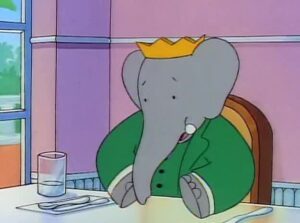 TWOS TRY TO ESCAPE their fear of being unloved by constantly doing things for others. They see themselves as thoughtful, well-meaning, and generous, although others may sometimes see them as intrusive and self-deceptive. To get others to love them, Twos believe that they must always be selfless and virtuous, so they sacrifice their own needs and desires for the good of others. If others still do not give Twos the love they want, their disappointment and anger must also be denied and repressed. Thus, Twos become caught between feeling love and feeling rage. Over time, suppressing their negative feelings takes its toll on their health and relationships and they might lash out at the very people whose love they so desperately want.
TWOS TRY TO ESCAPE their fear of being unloved by constantly doing things for others. They see themselves as thoughtful, well-meaning, and generous, although others may sometimes see them as intrusive and self-deceptive. To get others to love them, Twos believe that they must always be selfless and virtuous, so they sacrifice their own needs and desires for the good of others. If others still do not give Twos the love they want, their disappointment and anger must also be denied and repressed. Thus, Twos become caught between feeling love and feeling rage. Over time, suppressing their negative feelings takes its toll on their health and relationships and they might lash out at the very people whose love they so desperately want.
TWOS CAN ESCAPE THEIR EGO CAGE by acknowledging and releasing their ulterior motives and negative feelings toward others. The more honest they are about themselves, the more emotionally balanced they become. By recognizing and accepting all the different parts of themselves, even the negative ones, Twos undo the contradictions that have blocked them from being close to others. They can then become the genuinely loving, nurturing people they have always wanted to be. Their goodness is so real and selfless that they cannot help but attract others who love them deeply.
Transformations for PERSONALITY TYPE TWO
I NOW RELEASE
all feelings of rage and resentment
toward others.
I NOW RELEASE
all attempts to justify
my aggressive feelings.
I NOW RELEASE
all attachment to feeling
victimized and abused.
I NOW RELEASE
the fear that I am unwanted
and unloved.
I NOW RELEASE
all attempts to force
others to love me.
I NOW RELEASE
making others feel guilty for not
responding sufficiently to my needs.
I NOW RELEASE
abusing food and medications to
make up for my loneliness.
I NOW RELEASE
feeling that others owe me for the
things I have chosen to do for them.
I NOW RELEASE
believing that no one willingly
takes care of me.
I NOW RELEASE
expecting others to repay my help
in the way I want.
I NOW RELEASE
all physical ailments, aches,
and complaints.
I NOW RELEASE
calling attention to what I
have done for others.
I NOW RELEASE
feeling possessive of loved ones.
I NOW RELEASE
doing things for others
to make myself needed.
I NOW RELEASE
flattering others to make them
feel good about me.
I NOW RELEASE
not wanting to acknowledge
my negative feelings.
I NOW AFFIRM
that I own all of my feelings
without fear.
I NOW AFFIRM
that I am clear and conscious of
my motives.
I NOW AFFIRM
that I am lovable for
who I am.
I NOW AFFIRM
that my happiness does not depend
on pleasing others.
I NOW AFFIRM
that I can let go of loved ones.
I NOW AFFIRM
that I nurture my own growth
and development.
I NOW AFFIRM
that I love others without
expecting anything in return.
I NOW AFFIRM
the joy and warmth that
fills my heart.
I NOW AFFIRM
my gratitude for all that
others have given me.
PERSONALITY TYPE THREE: The Success-Oriented, Pragmatic Type
 THREES TRY TO ESCAPE from their fear of being rejected by seeking the affirmation of others through personal excellence. They see themselves as competent and worthwhile, although to others, they may seem attention-seeking and arrogant. If Threes sense that others are not responding to them, they begin to project an image that they believe will be more desirable. Thus, Threes disown their true self piece by piece and invest their energy in the roles they play until they lose touch with their feelings and any sense of who they really are. Terrified that someone will see through their facade to the growing emptiness inside, they may betray themselves and others to save their image.
THREES TRY TO ESCAPE from their fear of being rejected by seeking the affirmation of others through personal excellence. They see themselves as competent and worthwhile, although to others, they may seem attention-seeking and arrogant. If Threes sense that others are not responding to them, they begin to project an image that they believe will be more desirable. Thus, Threes disown their true self piece by piece and invest their energy in the roles they play until they lose touch with their feelings and any sense of who they really are. Terrified that someone will see through their facade to the growing emptiness inside, they may betray themselves and others to save their image.
THREES CAN ESCAPE THEIR EGO CAGE by acknowledging and releasing their desire for attention and admiration. They see that their ceaseless search for applause alienates them from themselves and leads them away from deeper values. As they dare to give up their masks, they discover that they are not empty; they have many long-buried feelings and selfless impulses. And, by pursuing values and relationships that truly nourish their spirit, they discover that the authentic self they have so long concealed is more admirable than any image they could project.
Transformations for PERSONALITY TYPE THREE
I NOW RELEASE
being obsessed by my hostile
feelings toward others.
I NOW RELEASE
believing that sabotaging others
will make things better for me.
I NOW RELEASE
feeling jealous of others and
their good fortune.
I NOW RELEASE
my fear of failing and
being humiliated.
I NOW RELEASE
fearing that I am inadequate
and will be rejected.
I NOW RELEASE
feeling that I must conceal
my mistakes and limitations.
I NOW RELEASE
closing down my feelings
in order to function.
I NOW RELEASE
betraying my own integrity to get
the admiration of others.
I NOW RELEASE
attempting to misrepresent myself
and my abilities.
I NOW RELEASE
the grandiose expectations
I have of myself.
I NOW RELEASE
craving constant attention
and affirmation.
I NOW RELEASE
using arrogance to compensate
for my own insecurity.
I NOW RELEASE
desiring to impress others
with my performance.
I NOW RELEASE
concealing myself behind masks.
I NOW RELEASE
comparing myself with others.
I NOW RELEASE
driving myself relentlessly
to be the best.
I NOW AFFIRM
that I have value regardless
of my achievements.
I NOW AFFIRM
that I am centered and
emotionally available.
I NOW AFFIRM
that I am caring
and have a good heart.
I NOW AFFIRM
that I take in the love
others give me.
I NOW AFFIRM
that I am responsible to those
who look up to me.
I NOW AFFIRM
that I am happy to work
for the good of others.
I NOW AFFIRM
that I develop my true talents by
accepting who I am.
I NOW AFFIRM
that I delight in the accomplishments
and successes of others.
I NOW AFFIRM
that I can reveal my real self
without being afraid.
PERSONALITY TYPE FOUR: The Sensitive, Withdrawn Type
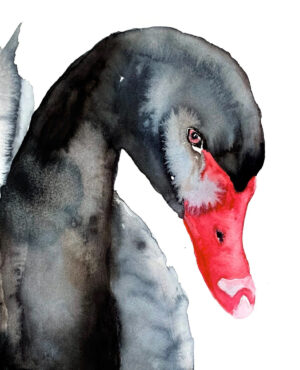 FOURS TRY TO ESCAPE from their fear of being flawed and defective by throwing themselves into their feelings. They see themselves as sensitive and intuitive, while others may see them as overly touchy and too ruled by their feelings. Fours believe that they will find a solution to their emotional turmoil by endlessly replaying their problems in their imaginations. As they go around and around, they stir up powerful emotional crosscurrents that draw them further inward until they lose all perspective on themselves, undermining their ability to deal effectively with life. In time, their emotional conflicts and difficulties might fan the flames of their self-doubt and self-hatred, and they withdraw into a darkening world of torment and despair.
FOURS TRY TO ESCAPE from their fear of being flawed and defective by throwing themselves into their feelings. They see themselves as sensitive and intuitive, while others may see them as overly touchy and too ruled by their feelings. Fours believe that they will find a solution to their emotional turmoil by endlessly replaying their problems in their imaginations. As they go around and around, they stir up powerful emotional crosscurrents that draw them further inward until they lose all perspective on themselves, undermining their ability to deal effectively with life. In time, their emotional conflicts and difficulties might fan the flames of their self-doubt and self-hatred, and they withdraw into a darkening world of torment and despair.
FOURS CAN ESCAPE THEIR EGO CAGE by acknowledging and releasing their strong attachments to their feelings. As they do so, Fours learn that their feelings do not die, as they had feared, but that other capacities and talents become available and can be acted on. The more they interact with reality, the richer their emotional life becomes. No longer the prisoners of every shifting mood, they find that their practical accomplishments grow. Fours thus discover that they are not only intuitive and creative, but also capable and strong.
Transformations for PERSONALITY TYPE FOUR
I NOW RELEASE
turning my anger and aggressions
against myself.
I NOW RELEASE
all self-hatred and self-contempt.
I NOW RELEASE
all feelings of hopelessness
and despair.
I NOW RELEASE
all self-sabotaging thoughts
and actions.
I NOW RELEASE
feeling that I am inadequate
and defective.
I NOW RELEASE
the fear that I am unimportant
and undesirable.
I NOW RELEASE
feeling shameful and misunderstood
by others.
I NOW RELEASE
being distraught, fatigued,
and inhibited.
I NOW RELEASE
feeling that people always
let me down.
I NOW RELEASE
all unrealistic expectations
of myself and others.
I NOW RELEASE
all claims of needing to be
treated differently.
I NOW RELEASE
all self-indulgence in my
emotions and behavior.
I NOW RELEASE
all self-doubt and emotional
vulnerability.
I NOW RELEASE
wanting to protect myself by
withdrawing from others.
I NOW RELEASE
all wasteful fantasies and
romantic longings.
I NOW RELEASE
dwelling on the past
to prolong my feelings.
I NOW AFFIRM
that I am not defined
by my feelings.
I NOW AFFIRM
that only the feelings I act on
express who I am.
I NOW AFFIRM
that I open myself up to people
and the world.
I NOW AFFIRM
that I use all of my
experiences to grow.
I NOW AFFIRM
the goodness of my life,
my friends, and myself.
I NOW AFFIRM
that I love myself and
treat myself gently.
I NOW AFFIRM
that I am free of the damage
of my past.
I NOW AFFIRM
that I am transforming my life
into something higher.
I NOW AFFIRM
that I am bringing something good
and beautiful into the world.
PERSONALITY TYPE FIVE: The Intellectual, Analytic Type
 FIVES TRY TO ESCAPE from their fear of being overwhelmed and powerless by focusing on specific areas of life which they feel they can master. They see themselves as intelligent and profound, although others may see them as too intense and strangely detached. As Fives become convinced that they cannot cope with people or with practical life, they retreat into private mental worlds. They seek sanctuary in their minds while watching the outside world with growing anxiety. Eventually, their fears taint their thoughts so much that Fives feel they must cut off their connections with the world to protect themselves from their terrors. With nothing to hold on to or believe in, they might ultimately shrink away into a self-created prison of isolation and hopelessness.
FIVES TRY TO ESCAPE from their fear of being overwhelmed and powerless by focusing on specific areas of life which they feel they can master. They see themselves as intelligent and profound, although others may see them as too intense and strangely detached. As Fives become convinced that they cannot cope with people or with practical life, they retreat into private mental worlds. They seek sanctuary in their minds while watching the outside world with growing anxiety. Eventually, their fears taint their thoughts so much that Fives feel they must cut off their connections with the world to protect themselves from their terrors. With nothing to hold on to or believe in, they might ultimately shrink away into a self-created prison of isolation and hopelessness.
FIVES CAN ESCAPE THEIR EGO CAGE by acknowledging and releasing their fears of being powerless and overwhelmed by the outside world. By disengaging from their overheated mental associations, Fives discover that in the present moment, they can indeed be safe and at ease in the environment. They begin to focus on those things that support them rather than threaten them. As they leave their shell, Fives realize not only that there is a place for them in the world, but that they are capable of enjoying and mastering life.
Transformations for PERSONALITY TYPE FIVE
I NOW RELEASE
all fearfulness of the world
around me.
I NOW RELEASE
all feelings of powerlessness
and hopelessness.
I NOW RELEASE
my fear of being violated
or overwhelmed by others.
I NOW RELEASE
my dark and destructive fantasies.
I NOW RELEASE
isolating myself by
rejecting others.
I NOW RELEASE
believing that no one can
be depended on.
I NOW RELEASE
desiring to antagonize others
and ruin their peace of mind.
I NOW RELEASE
being cynical and contemptuous of the
normalcy of others.
I NOW RELEASE
fearing that others will
exploit me.
I NOW RELEASE
feeling that I am a
misfit in life.
I NOW RELEASE
being secretive and hiding
from people.
I NOW RELEASE
postponing my emotional needs.
I NOW RELEASE
neglecting my physical health
and appearance.
I NOW RELEASE
the agitation and restlessness
of my mind.
I NOW RELEASE
feeling that I always need to know
more before I do anything.
I NOW RELEASE
avoiding my life by escaping
into my mind.
I NOW AFFIRM
that I am secure and grounded in
the reality of my own life.
I NOW AFFIRM
the strength and wonder
of my body.
I NOW AFFIRM
the value of my inventiveness
and sense of humor.
I NOW AFFIRM
that I accept uncertainty
and ambiguity.
I NOW AFFIRM
that my life and struggles are
meaningful and rewarding.
I NOW AFFIRM
that I have faith in the future
and in human beings.
I NOW AFFIRM
that I reach out to others
confidently as an equal.
I NOW AFFIRM
that I find serenity in being
compassionate toward others.
I NOW AFFIRM
that I support others from the
fullness of my heart.
PERSONALITY TYPE SIX: The Committed, Traditionalistic Type
 SIXES TRY TO ESCAPE from their fear of being abandoned by allying themselves with others. They see themselves as trustworthy and reliable, although others may see them as defensive and insecure. They want to feel that they belong somewhere, so they look to others to provide security and show them what to do. The problem is that Sixes are also anxious about depending on others. They are thus caught between needing the security of an authority and wanting to prove their independence. Sixes may try to solve their anxiety with outbursts of misdirected aggression against those around them. When their outbursts drive away supporters and protectors, Sixes might become all the more anxious and depressed.
SIXES TRY TO ESCAPE from their fear of being abandoned by allying themselves with others. They see themselves as trustworthy and reliable, although others may see them as defensive and insecure. They want to feel that they belong somewhere, so they look to others to provide security and show them what to do. The problem is that Sixes are also anxious about depending on others. They are thus caught between needing the security of an authority and wanting to prove their independence. Sixes may try to solve their anxiety with outbursts of misdirected aggression against those around them. When their outbursts drive away supporters and protectors, Sixes might become all the more anxious and depressed.
SIXES CAN ESCAPE THEIR EGO CAGE by acknowledging and releasing their feelings of dependency. By learning to centre themselves and trust their own capacities, they find a stable place within themselves. They learn that they can believe in themselves, and that they do not need to depend on others to “save” them. They stop relinquishing their authority to others and take constructive actions for their own welfare. When Sixes dare to pursue their own values and beliefs, they begin to discover the real courage and security they have always sought.
Transformations for PERSONALITY TYPE SIX
I NOW RELEASE
my fear of being abandoned
and alone.
I NOW RELEASE
my self-defeating, self-punishing
tendencies.
I NOW RELEASE
all feelings of dread
about the future.
I NOW RELEASE
feeling persecuted, trapped,
and desperate.
I NOW RELEASE
overreacting and exaggerating
my problems.
I NOW RELEASE
taking out my fears and
anxieties on others.
I NOW RELEASE
being suspicious of others and
thinking the worst of them.
I NOW RELEASE
feeling inferior and incapable
of functioning on my own.
I NOW RELEASE
feeling cowardly and unsure
of myself.
I NOW RELEASE
acting “tough” to disguise
my insecurities.
I NOW RELEASE
my fear and dislike of those who
are different from me.
I NOW RELEASE
blaming others for my own
problems and mistakes.
I NOW RELEASE
being evasive and defensive
with those who need me.
I NOW RELEASE
my tendency to be negative
and complaining.
I NOW RELEASE
my fear of taking responsibility
for my mistakes.
I NOW RELEASE
looking to others to make me
feel secure.
I NOW AFFIRM
that I am independent
and capable.
I NOW AFFIRM
that I can keep my own identity
in groups and in relationships.
I NOW AFFIRM
that I have faith in myself,
my talents, and my future.
I NOW AFFIRM
that I meet difficulties
with calmness and confidence.
I NOW AFFIRM
that I am secure and able to make
the best of whatever comes my way.
I NOW AFFIRM
the kinship I have with every
human being.
I NOW AFFIRM
that I am understanding and generous
to all who need me.
I NOW AFFIRM
that I act courageously in
all circumstances.
I NOW AFFIRM
that I find true authority
within me.
PERSONALITY TYPE SEVEN: The Hyperactive, Uninhibited Type
 SEVENS TRY TO ESCAPE from their fear of being deprived by immersing themselves in constant activity. They see themselves as practical and fun-loving, although others may see them as superficial and infantile. Sevens fear that if they run out of stimulation—of things to have and do—something terrible will happen, so they stay busy and on the go. They spread themselves too thin, however, using up their resources, while constantly distracting themselves with even more experiences. Eventually, the strain causes their health and emotional stability to collapse, and Sevens are left exhausted and in panic.
SEVENS TRY TO ESCAPE from their fear of being deprived by immersing themselves in constant activity. They see themselves as practical and fun-loving, although others may see them as superficial and infantile. Sevens fear that if they run out of stimulation—of things to have and do—something terrible will happen, so they stay busy and on the go. They spread themselves too thin, however, using up their resources, while constantly distracting themselves with even more experiences. Eventually, the strain causes their health and emotional stability to collapse, and Sevens are left exhausted and in panic.
SEVENS CAN ESCAPE THEIR EGO CAGE by acknowledging and releasing their attachment to being stimulated all the time. When they slow down, they discover that many of their activities do not actually satisfy them. And, as they let go of their feeling that they must be constantly having new experiences, they learn to stay with each experience long enough to assimilate it. Sevens finally realize that no experience or thing in the external world can ultimately keep them satisfied or free from anxiety, but if they search within themselves, they will find a stillness and serenity which is a dependable source of undiminished joy.
Transformations for PERSONALITY TYPE SEVEN
I NOW RELEASE
all reckless and destructive
impulses.
I NOW RELEASE
feeling that I will be
overwhelmed by anxiety.
I NOW RELEASE
all compulsions and addictions.
I NOW RELEASE
burning myself out by trying to
satisfy all of my desires.
I NOW RELEASE
running away from the consequences
of my actions.
I NOW RELEASE
insulting or abusing others
to vent my frustrations.
I NOW RELEASE
allowing my insecurities to drive me
into dangerous situations and behavior.
I NOW RELEASE
sacrificing my health and happiness
for instant gratification.
I NOW RELEASE
being demanding and impatient
with others.
I NOW RELEASE
fearing that there will not be
enough for me.
I NOW RELEASE
always feeling that I need more.
I NOW RELEASE
wanting every moment to be
exciting and dramatic.
I NOW RELEASE
escaping from myself through
distractions and constant activity.
I NOW RELEASE
letting my lack of self-discipline
ruin my opportunities.
I NOW RELEASE
overextending myself with more
than I can do well.
I NOW RELEASE
believing that external things
will make me happy.
I NOW AFFIRM
that I am happiest when I am
calm and centered.
I NOW AFFIRM
that I can say no to myself
without feeling deprived.
I NOW AFFIRM
that there will be enough for me
of whatever I need.
I NOW AFFIRM
that I am resilient in the face
of setbacks.
I NOW AFFIRM
that I find satisfaction in
ordinary things.
I NOW AFFIRM
that I stay with projects until
I complete them.
I NOW AFFIRM
that I care deeply about people and
am committed to their happiness.
I NOW AFFIRM
that there is a spiritual dimension
to my life.
I NOW AFFIRM
that I am profoundly grateful
to be alive.
PERSONALITY TYPE EIGHT: The Powerful, Dominating Type
 EIGHTS TRY TO ESCAPE from their fear of being in the power or control of others by maintaining a stance of strength and toughness. They see themselves as strong and independent, although others may see them as belligerent and dictatorial. In their effort to suppress their fear and vulnerability, Eights begin to see all relationships as power struggles and all intimacy as weakness. They steel themselves against depending on others, and seek more power so that no one can take advantage of them. If they continue hardening themselves, they eventually lose the capacity to feel anything for others—love, trust, or pity. Eights ultimately become abusive to get their way and remain in control, causing everyone who has been abused by them to turn against them.
EIGHTS TRY TO ESCAPE from their fear of being in the power or control of others by maintaining a stance of strength and toughness. They see themselves as strong and independent, although others may see them as belligerent and dictatorial. In their effort to suppress their fear and vulnerability, Eights begin to see all relationships as power struggles and all intimacy as weakness. They steel themselves against depending on others, and seek more power so that no one can take advantage of them. If they continue hardening themselves, they eventually lose the capacity to feel anything for others—love, trust, or pity. Eights ultimately become abusive to get their way and remain in control, causing everyone who has been abused by them to turn against them.
EIGHTS CAN ESCAPE THEIR EGO CAGE by acknowledging and releasing their fear of intimacy. As they do so, they begin to drop their guard and discover that real love and friendship will not threaten them. They find that the more they trust and care for others, the more others willingly support them and help them attain their goals. By allowing others to be close to them, Eights are able to create a world of cooperation and mutual fulfilment rather than one of conflict and mutual destruction.
Transformations for PERSONALITY TYPE EIGHT
I NOW RELEASE
all anger, rage, and violence
from my life.
I NOW RELEASE
dehumanizing myself by violating
others in any way.
I NOW RELEASE
being verbally or physically abusive.
I NOW RELEASE
believing that taking vengeance will
free me from my own pain.
I NOW RELEASE
hardening my heart
against suffering.
I NOW RELEASE
my fear of ever being vulnerable
or weak.
I NOW RELEASE
believing that I do not
need others.
I NOW RELEASE
believing that I must bully
people to get my way.
I NOW RELEASE
my fear that others will
control me.
I NOW RELEASE
feeling that I must only
look after myself.
I NOW RELEASE
my fear of losing to anyone.
I NOW RELEASE
feeling that I must
never be afraid.
I NOW RELEASE
attempting to control everything
in my life.
I NOW RELEASE
allowing my pride and ego to ruin
my health and relationships.
I NOW RELEASE
thinking that anyone who does not
agree with me is against me.
I NOW RELEASE
being hard-boiled and denying
my need for affection.
I NOW AFFIRM
that I believe in people and care
about their welfare.
I NOW AFFIRM
that I am big-hearted and let
others share the glory.
I NOW AFFIRM
that I am honorable and therefore
worthy of respect.
I NOW AFFIRM
that I am most fulfilled by
championing others.
I NOW AFFIRM
that I have tender feelings
and good impulses.
I NOW AFFIRM
that I can be gentle without
being afraid.
I NOW AFFIRM
that I master myself and my own
passions.
I NOW AFFIRM
that there is an authority greater
than me.
I NOW AFFIRM
that I love others and ask for
their love in return.
PERSONALITY TYPE NINE: The Easygoing, Phlegmatic Type
 NINES TRY TO ESCAPE their fear of separation by creating an “environment” that will nurture them. They see themselves as undemanding, uncomplicated people, although others may feel that they are complacent and neglectful. Nines believe that everything should always be peaceful and harmonious. They begin to create problems, however, because they refuse to look at anything that contradicts their idealized world view, hoping for the best while ignoring difficulties until others are forced to solve them. Eventually, others become frustrated and angry with them, causing Nines to retreat into a psychic inner sanctum where nothing can touch or hurt them. They might eventually turn their backs on reality and drift into a state of apathy and helplessness.
NINES TRY TO ESCAPE their fear of separation by creating an “environment” that will nurture them. They see themselves as undemanding, uncomplicated people, although others may feel that they are complacent and neglectful. Nines believe that everything should always be peaceful and harmonious. They begin to create problems, however, because they refuse to look at anything that contradicts their idealized world view, hoping for the best while ignoring difficulties until others are forced to solve them. Eventually, others become frustrated and angry with them, causing Nines to retreat into a psychic inner sanctum where nothing can touch or hurt them. They might eventually turn their backs on reality and drift into a state of apathy and helplessness.
NINES CAN ESCAPE THEIR EGO CAGE by acknowledging and releasing their idealizations of the world and others. As they do so, Nines see their loved ones more objectively and realize that others’ lives are not inherently more important than their own. This frees Nines to see their own value and gives them the energy to become actively engaged with life. By investing in their own development, and participating fully in their world, Nines find the contentment they have always sought.
Transformations for PERSONALITY TYPE NINE
I NOW RELEASE
not taking an active interest
in my own life.
I NOW RELEASE
turning away from whatever is
unpleasant or difficult.
I NOW RELEASE
feeling that there is nothing I can
do to improve my life.
I NOW RELEASE
being numb and emotionally
unavailable.
I NOW RELEASE
refusing to see my
own aggressions.
I NOW RELEASE
ignoring problems until they
become overwhelming.
I NOW RELEASE
all dependency and fear of being
on my own.
I NOW RELEASE
all wishful thinking and giving up
too soon.
I NOW RELEASE
neglecting myself and my own
legitimate needs.
I NOW RELEASE
seeking quick, easy “solutions”
to my problems.
I NOW RELEASE
feeling threatened by significant
changes in my life.
I NOW RELEASE
losing myself in comforting habits
and routines.
I NOW RELEASE
feeling that most things are just
too much trouble.
I NOW RELEASE
all inattentiveness and
forgetfulness.
I NOW RELEASE
going along with others
to keep the peace.
I NOW RELEASE
living through others and not
developing myself.
I NOW AFFIRM
that I am confident, strong,
and independent.
I NOW AFFIRM
that I develop my mind and
think things through.
I NOW AFFIRM
that I am awake and alert to
the world around me.
I NOW AFFIRM
that I am proud of myself
and my abilities.
I NOW AFFIRM
that I am steadfast and dependable
in difficult times.
I NOW AFFIRM
that I look deeply into myself
without fear.
I NOW AFFIRM
that I am excited about
my future.
I NOW AFFIRM
that I am a powerful, healing
force in my world.
I NOW AFFIRM
that I actively embrace all
that life brings.
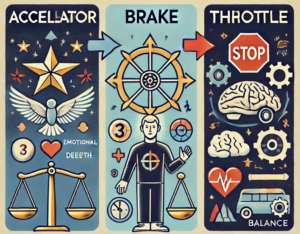 Integration of Cognitive Functions
Integration of Cognitive Functions
 I like this idea from the neuropsychologist
I like this idea from the neuropsychologist  The accelerator/brake/throttle model can also offers valuable insights into stress reactions and growth opportunities for each Enneagram type.
The accelerator/brake/throttle model can also offers valuable insights into stress reactions and growth opportunities for each Enneagram type. We can also map our dominant instincts onto the accelerator, brake, and throttle metaphor. The accelerator mode aligns with the one-on-one/sexual instinct, representing sensory excitation and active engagement. The brake mode corresponds to the self-preservation instinct, reflecting active inhibition and withdrawal. The throttle mode correlates with the social instinct, embodying active regulation and balance.
We can also map our dominant instincts onto the accelerator, brake, and throttle metaphor. The accelerator mode aligns with the one-on-one/sexual instinct, representing sensory excitation and active engagement. The brake mode corresponds to the self-preservation instinct, reflecting active inhibition and withdrawal. The throttle mode correlates with the social instinct, embodying active regulation and balance.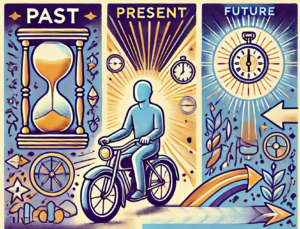 Each of these three types’ responses can also be viewed in terms of their time orientation:
Each of these three types’ responses can also be viewed in terms of their time orientation: In an effort to make therapy more accessible and adaptable to your lifestyle, I am excited to offer reduced-fee phone therapy sessions. These sessions provide the same dedicated listening and empathetic support, but with the added flexibility of not being tied to a physical location. Whether you’re out for a walk, relaxing at home, or even doing some stretching/yoga whilst talking, these sessions allow you to engage in therapy in a more relaxed and convenient manner.
In an effort to make therapy more accessible and adaptable to your lifestyle, I am excited to offer reduced-fee phone therapy sessions. These sessions provide the same dedicated listening and empathetic support, but with the added flexibility of not being tied to a physical location. Whether you’re out for a walk, relaxing at home, or even doing some stretching/yoga whilst talking, these sessions allow you to engage in therapy in a more relaxed and convenient manner. THE WAY IT IS
THE WAY IT IS  Relationships are an interesting, complex dance between two individuals. Yet, the complexities can sometimes lead to misunderstandings.
Relationships are an interesting, complex dance between two individuals. Yet, the complexities can sometimes lead to misunderstandings.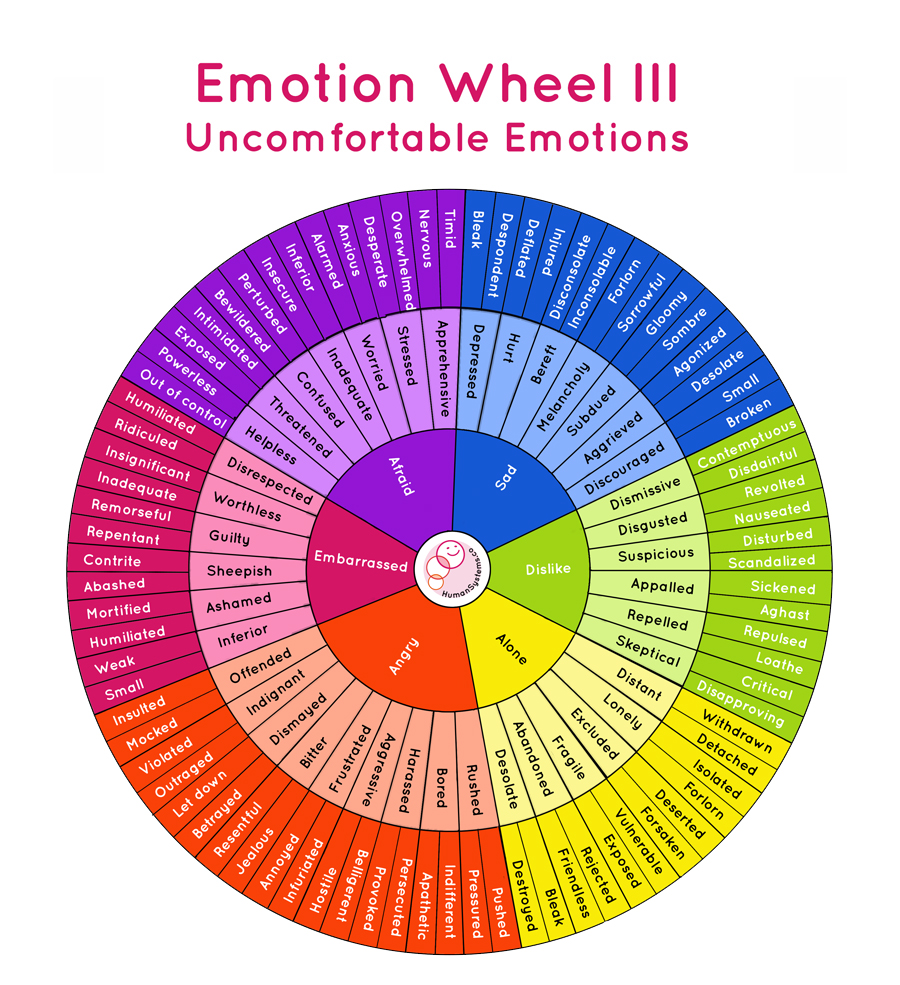 Step 2: Guidance for Engaged Listening
Step 2: Guidance for Engaged Listening
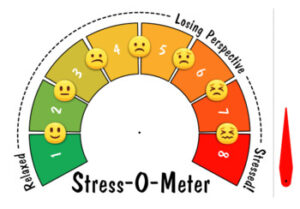 Another perspective on suffering is that it profoundly impacts our ability to be “present” (to ourselves, others, and the world). The term ‘presence’ is often employed by psycho-spiritual aficionados in a somewhat mystical manner, but its essence is straightforward. My definition of presence is as follows:
Another perspective on suffering is that it profoundly impacts our ability to be “present” (to ourselves, others, and the world). The term ‘presence’ is often employed by psycho-spiritual aficionados in a somewhat mystical manner, but its essence is straightforward. My definition of presence is as follows:

 Enneagram Type 1: The Reformer
Enneagram Type 1: The Reformer Enneagram Type 2: The Helper
Enneagram Type 2: The Helper Enneagram Type 3: The Achiever
Enneagram Type 3: The Achiever Enneagram Type 4: The Individualist
Enneagram Type 4: The Individualist Enneagram Type 5: The Investigator
Enneagram Type 5: The Investigator Enneagram Type 6: The Loyalist
Enneagram Type 6: The Loyalist Enneagram Type 7: The Enthusiast
Enneagram Type 7: The Enthusiast Enneagram Type 8: The Challenger
Enneagram Type 8: The Challenger Enneagram Type 9: The Peacemaker
Enneagram Type 9: The Peacemaker
 With this in mind, we all could probably benefit from carrying around in our pockets the psycho-spiritual equivalent of Bach’s Rescue Remedy, which, as the spray applicator promises, is designed to produce a state-shift of COMFORT & REASSURANCE.
With this in mind, we all could probably benefit from carrying around in our pockets the psycho-spiritual equivalent of Bach’s Rescue Remedy, which, as the spray applicator promises, is designed to produce a state-shift of COMFORT & REASSURANCE.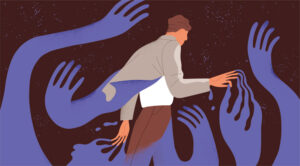 Waking into a new day often brings a sense of confusion or “lostness,” reminiscent of our first moments of consciousness, both as evolving creatures—when we were all fish or other aquatic beings—but also as newborns taking our first breaths. This initial or even ongoing disorientation is recognized by all psycho-spiritual traditions, highlighting our need for grounding and integration at the start of the day, as well as when feeling overwhelmed.
Waking into a new day often brings a sense of confusion or “lostness,” reminiscent of our first moments of consciousness, both as evolving creatures—when we were all fish or other aquatic beings—but also as newborns taking our first breaths. This initial or even ongoing disorientation is recognized by all psycho-spiritual traditions, highlighting our need for grounding and integration at the start of the day, as well as when feeling overwhelmed. Consider for a moment
Consider for a moment 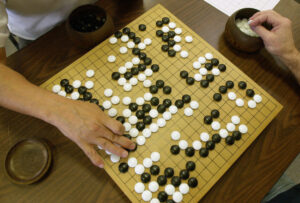 Here are a couple of terms that I have found really useful when thinking about creating my
Here are a couple of terms that I have found really useful when thinking about creating my 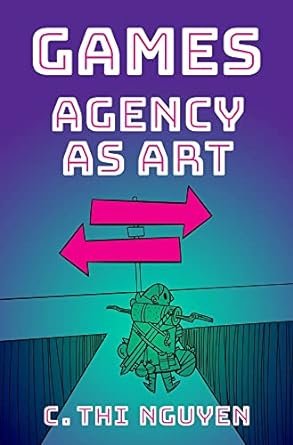 When a crisis, a very stressful or painful event, a trauma occurs in our lives, it can often feel like we’ve stepped out during the first act of a play, or game, or football match, gone to the lavatory or to get a drink, and upon returning for the second half of this thing, the plot or “rules” of the game, seem no longer applicable.
When a crisis, a very stressful or painful event, a trauma occurs in our lives, it can often feel like we’ve stepped out during the first act of a play, or game, or football match, gone to the lavatory or to get a drink, and upon returning for the second half of this thing, the plot or “rules” of the game, seem no longer applicable.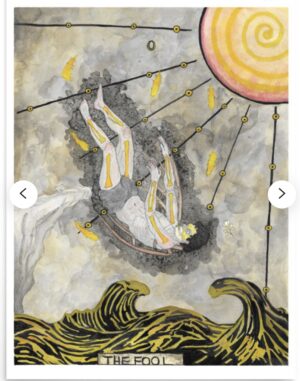 The original title Fernando Pessoa’s “Book of Disquiet”, the title in Portuguese is “Livro do Desassossego.”
The original title Fernando Pessoa’s “Book of Disquiet”, the title in Portuguese is “Livro do Desassossego.” Perhaps the most fascinating yet paradoxical thing about personality is that our greatest strengths are also a kind of weakness. Just as that bifocal lens of Self allows us to see both near and far, our most positive traits also encapsulate our shadow sides.
Perhaps the most fascinating yet paradoxical thing about personality is that our greatest strengths are also a kind of weakness. Just as that bifocal lens of Self allows us to see both near and far, our most positive traits also encapsulate our shadow sides. Perhaps the most fascinating yet paradoxical thing about personality is that our greatest strengths are also a kind of weakness. Just as that bifocal lens of Self allows us to see both near and far, our most positive traits also encapsulate our shadow sides.
Perhaps the most fascinating yet paradoxical thing about personality is that our greatest strengths are also a kind of weakness. Just as that bifocal lens of Self allows us to see both near and far, our most positive traits also encapsulate our shadow sides. Perhaps the most fascinating yet paradoxical thing about personality is that our greatest strengths are also a kind of weakness. Just as that bifocal lens of Self allows us to see both near and far, our most positive traits also encapsulate our shadow sides.
Perhaps the most fascinating yet paradoxical thing about personality is that our greatest strengths are also a kind of weakness. Just as that bifocal lens of Self allows us to see both near and far, our most positive traits also encapsulate our shadow sides. Perhaps the most fascinating yet paradoxical thing about personality is that our greatest strengths are also a kind of weakness. Just as that bifocal lens of Self allows us to see both near and far, our most positive traits also encapsulate our shadow sides.
Perhaps the most fascinating yet paradoxical thing about personality is that our greatest strengths are also a kind of weakness. Just as that bifocal lens of Self allows us to see both near and far, our most positive traits also encapsulate our shadow sides. Perhaps the most fascinating yet paradoxical thing about personality is that our greatest strengths are also a kind of weakness. Just as that bifocal lens of Self allows us to see both near and far, our most positive traits also encapsulate our shadow sides.
Perhaps the most fascinating yet paradoxical thing about personality is that our greatest strengths are also a kind of weakness. Just as that bifocal lens of Self allows us to see both near and far, our most positive traits also encapsulate our shadow sides. Perhaps the most fascinating yet paradoxical thing about personality is that our greatest strengths are also a kind of weakness. Just as that bifocal lens of Self allows us to see both near and far, our most positive traits also encapsulate our shadow sides.
Perhaps the most fascinating yet paradoxical thing about personality is that our greatest strengths are also a kind of weakness. Just as that bifocal lens of Self allows us to see both near and far, our most positive traits also encapsulate our shadow sides. Perhaps the most fascinating yet paradoxical thing about personality is that our greatest strengths are also a kind of weakness. Just as that bifocal lens of Self allows us to see both near and far, our most positive traits also encapsulate our shadow sides.
Perhaps the most fascinating yet paradoxical thing about personality is that our greatest strengths are also a kind of weakness. Just as that bifocal lens of Self allows us to see both near and far, our most positive traits also encapsulate our shadow sides. Perhaps the most fascinating yet paradoxical thing about personality is that our greatest strengths are also a kind of weakness. Just as that bifocal lens of Self allows us to see both near and far, our most positive traits also encapsulate our shadow sides.
Perhaps the most fascinating yet paradoxical thing about personality is that our greatest strengths are also a kind of weakness. Just as that bifocal lens of Self allows us to see both near and far, our most positive traits also encapsulate our shadow sides.


 During our first 50-minute Connecting Conversation, the insights gathered from these assessments will guide our discussion, focusing on your individual needs and potentials.
During our first 50-minute Connecting Conversation, the insights gathered from these assessments will guide our discussion, focusing on your individual needs and potentials.
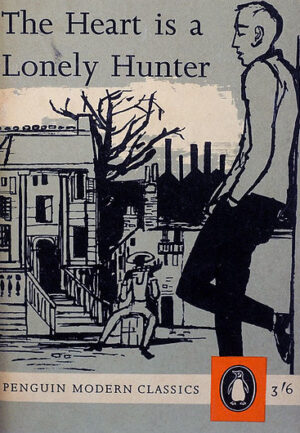


 To unravel the complexity of personal identity, various frameworks have emerged, each offering unique lenses to perceive and interpret who we are. Three of these are core to our self-understanding:
To unravel the complexity of personal identity, various frameworks have emerged, each offering unique lenses to perceive and interpret who we are. Three of these are core to our self-understanding: 



 Over nearly a century, a vast corpus of psychological research has underscored the salience of mental flexibility for optimal mental health and life satisfaction. This concept is often discussed in connection with the “Dionysian Personality Style,” a term adopted by
Over nearly a century, a vast corpus of psychological research has underscored the salience of mental flexibility for optimal mental health and life satisfaction. This concept is often discussed in connection with the “Dionysian Personality Style,” a term adopted by  Hypnotherapy, used alongside third wave mindfulness-based strategies, including Acceptance and Commitment Therapy (ACT), Dialectical Behavior Therapy (DBT), and Mindfulness-Based Cognitive Therapy (MBCT), have proven clinically effective in treating a wide range of mental health issues. All of these therapies offer techniques to foster the mental flexibility that characterizes the Dionysian style and, as well as various
Hypnotherapy, used alongside third wave mindfulness-based strategies, including Acceptance and Commitment Therapy (ACT), Dialectical Behavior Therapy (DBT), and Mindfulness-Based Cognitive Therapy (MBCT), have proven clinically effective in treating a wide range of mental health issues. All of these therapies offer techniques to foster the mental flexibility that characterizes the Dionysian style and, as well as various 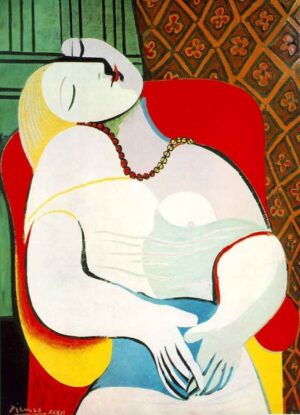




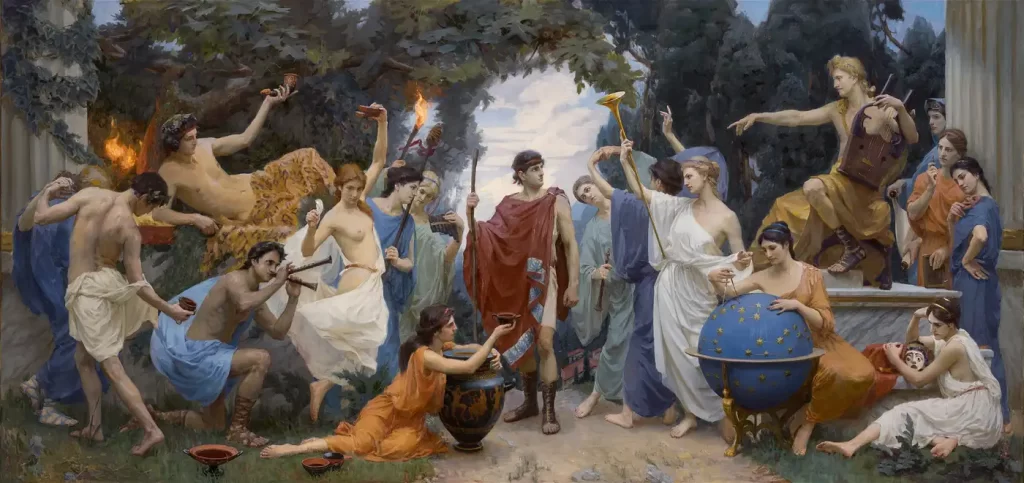 Friedrich Nietzsche, a philosopher known for his profound and often provocative insights, left an indelible mark on the field of psychology. His exploration of the Apollonian and Dionysian dichotomy, inspired by Greek mythology, offers a unique lens through which we can understand human personality. This article delves into Nietzsche’s exploration of these two types, their origins, and their relevance to modern personality psychology.
Friedrich Nietzsche, a philosopher known for his profound and often provocative insights, left an indelible mark on the field of psychology. His exploration of the Apollonian and Dionysian dichotomy, inspired by Greek mythology, offers a unique lens through which we can understand human personality. This article delves into Nietzsche’s exploration of these two types, their origins, and their relevance to modern personality psychology.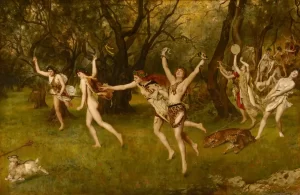 Modern philosophers have further explored this dichotomy. For instance, Camille Paglia, in “Sexual Personae,” applies Nietzsche’s dichotomy to the analysis of art and literature, arguing that the tension between the Apollonian and Dionysian is a driving force in the creation of art. Similarly, psychologist Carl Jung used the dichotomy as a metaphor for the conscious (Apollonian) and unconscious (Dionysian) aspects of the psyche.
Modern philosophers have further explored this dichotomy. For instance, Camille Paglia, in “Sexual Personae,” applies Nietzsche’s dichotomy to the analysis of art and literature, arguing that the tension between the Apollonian and Dionysian is a driving force in the creation of art. Similarly, psychologist Carl Jung used the dichotomy as a metaphor for the conscious (Apollonian) and unconscious (Dionysian) aspects of the psyche.
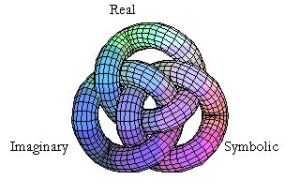
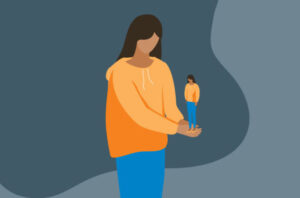
 ONES TRY TO ESCAPE from their fear of being condemned by striving to be perfect. They see themselves as fair, reasonable, and objective, although others may see them as rigid, dogmatic, and overly critical. Ones believe that if they discipline themselves sufficiently, they can avoid making mistakes. Being human, however, they do make mistakes—obliging them to struggle ever harder to organize and improve everything in their lives. If they see that others do not share their idealism, Ones increasingly become unable to control their anger about having to do everything themselves. If Ones continue pushing themselves toward “perfection,” the repressed parts of their psyches explode, leaving them enraged and irrational.
ONES TRY TO ESCAPE from their fear of being condemned by striving to be perfect. They see themselves as fair, reasonable, and objective, although others may see them as rigid, dogmatic, and overly critical. Ones believe that if they discipline themselves sufficiently, they can avoid making mistakes. Being human, however, they do make mistakes—obliging them to struggle ever harder to organize and improve everything in their lives. If they see that others do not share their idealism, Ones increasingly become unable to control their anger about having to do everything themselves. If Ones continue pushing themselves toward “perfection,” the repressed parts of their psyches explode, leaving them enraged and irrational. TWOS TRY TO ESCAPE their fear of being unloved by constantly doing things for others. They see themselves as thoughtful, well-meaning, and generous, although others may sometimes see them as intrusive and self-deceptive. To get others to love them, Twos believe that they must always be selfless and virtuous, so they sacrifice their own needs and desires for the good of others. If others still do not give Twos the love they want, their disappointment and anger must also be denied and repressed. Thus, Twos become caught between feeling love and feeling rage. Over time, suppressing their negative feelings takes its toll on their health and relationships and they might lash out at the very people whose love they so desperately want.
TWOS TRY TO ESCAPE their fear of being unloved by constantly doing things for others. They see themselves as thoughtful, well-meaning, and generous, although others may sometimes see them as intrusive and self-deceptive. To get others to love them, Twos believe that they must always be selfless and virtuous, so they sacrifice their own needs and desires for the good of others. If others still do not give Twos the love they want, their disappointment and anger must also be denied and repressed. Thus, Twos become caught between feeling love and feeling rage. Over time, suppressing their negative feelings takes its toll on their health and relationships and they might lash out at the very people whose love they so desperately want. THREES TRY TO ESCAPE from their fear of being rejected by seeking the affirmation of others through personal excellence. They see themselves as competent and worthwhile, although to others, they may seem attention-seeking and arrogant. If Threes sense that others are not responding to them, they begin to project an image that they believe will be more desirable. Thus, Threes disown their true self piece by piece and invest their energy in the roles they play until they lose touch with their feelings and any sense of who they really are. Terrified that someone will see through their facade to the growing emptiness inside, they may betray themselves and others to save their image.
THREES TRY TO ESCAPE from their fear of being rejected by seeking the affirmation of others through personal excellence. They see themselves as competent and worthwhile, although to others, they may seem attention-seeking and arrogant. If Threes sense that others are not responding to them, they begin to project an image that they believe will be more desirable. Thus, Threes disown their true self piece by piece and invest their energy in the roles they play until they lose touch with their feelings and any sense of who they really are. Terrified that someone will see through their facade to the growing emptiness inside, they may betray themselves and others to save their image. FOURS TRY TO ESCAPE from their fear of being flawed and defective by throwing themselves into their feelings. They see themselves as sensitive and intuitive, while others may see them as overly touchy and too ruled by their feelings. Fours believe that they will find a solution to their emotional turmoil by endlessly replaying their problems in their imaginations. As they go around and around, they stir up powerful emotional crosscurrents that draw them further inward until they lose all perspective on themselves, undermining their ability to deal effectively with life. In time, their emotional conflicts and difficulties might fan the flames of their self-doubt and self-hatred, and they withdraw into a darkening world of torment and despair.
FOURS TRY TO ESCAPE from their fear of being flawed and defective by throwing themselves into their feelings. They see themselves as sensitive and intuitive, while others may see them as overly touchy and too ruled by their feelings. Fours believe that they will find a solution to their emotional turmoil by endlessly replaying their problems in their imaginations. As they go around and around, they stir up powerful emotional crosscurrents that draw them further inward until they lose all perspective on themselves, undermining their ability to deal effectively with life. In time, their emotional conflicts and difficulties might fan the flames of their self-doubt and self-hatred, and they withdraw into a darkening world of torment and despair. FIVES TRY TO ESCAPE from their fear of being overwhelmed and powerless by focusing on specific areas of life which they feel they can master. They see themselves as intelligent and profound, although others may see them as too intense and strangely detached. As Fives become convinced that they cannot cope with people or with practical life, they retreat into private mental worlds. They seek sanctuary in their minds while watching the outside world with growing anxiety. Eventually, their fears taint their thoughts so much that Fives feel they must cut off their connections with the world to protect themselves from their terrors. With nothing to hold on to or believe in, they might ultimately shrink away into a self-created prison of isolation and hopelessness.
FIVES TRY TO ESCAPE from their fear of being overwhelmed and powerless by focusing on specific areas of life which they feel they can master. They see themselves as intelligent and profound, although others may see them as too intense and strangely detached. As Fives become convinced that they cannot cope with people or with practical life, they retreat into private mental worlds. They seek sanctuary in their minds while watching the outside world with growing anxiety. Eventually, their fears taint their thoughts so much that Fives feel they must cut off their connections with the world to protect themselves from their terrors. With nothing to hold on to or believe in, they might ultimately shrink away into a self-created prison of isolation and hopelessness. SIXES TRY TO ESCAPE from their fear of being abandoned by allying themselves with others. They see themselves as trustworthy and reliable, although others may see them as defensive and insecure. They want to feel that they belong somewhere, so they look to others to provide security and show them what to do. The problem is that Sixes are also anxious about depending on others. They are thus caught between needing the security of an authority and wanting to prove their independence. Sixes may try to solve their anxiety with outbursts of misdirected aggression against those around them. When their outbursts drive away supporters and protectors, Sixes might become all the more anxious and depressed.
SIXES TRY TO ESCAPE from their fear of being abandoned by allying themselves with others. They see themselves as trustworthy and reliable, although others may see them as defensive and insecure. They want to feel that they belong somewhere, so they look to others to provide security and show them what to do. The problem is that Sixes are also anxious about depending on others. They are thus caught between needing the security of an authority and wanting to prove their independence. Sixes may try to solve their anxiety with outbursts of misdirected aggression against those around them. When their outbursts drive away supporters and protectors, Sixes might become all the more anxious and depressed. SEVENS TRY TO ESCAPE from their fear of being deprived by immersing themselves in constant activity. They see themselves as practical and fun-loving, although others may see them as superficial and infantile. Sevens fear that if they run out of stimulation—of things to have and do—something terrible will happen, so they stay busy and on the go. They spread themselves too thin, however, using up their resources, while constantly distracting themselves with even more experiences. Eventually, the strain causes their health and emotional stability to collapse, and Sevens are left exhausted and in panic.
SEVENS TRY TO ESCAPE from their fear of being deprived by immersing themselves in constant activity. They see themselves as practical and fun-loving, although others may see them as superficial and infantile. Sevens fear that if they run out of stimulation—of things to have and do—something terrible will happen, so they stay busy and on the go. They spread themselves too thin, however, using up their resources, while constantly distracting themselves with even more experiences. Eventually, the strain causes their health and emotional stability to collapse, and Sevens are left exhausted and in panic. EIGHTS TRY TO ESCAPE from their fear of being in the power or control of others by maintaining a stance of strength and toughness. They see themselves as strong and independent, although others may see them as belligerent and dictatorial. In their effort to suppress their fear and vulnerability, Eights begin to see all relationships as power struggles and all intimacy as weakness. They steel themselves against depending on others, and seek more power so that no one can take advantage of them. If they continue hardening themselves, they eventually lose the capacity to feel anything for others—love, trust, or pity. Eights ultimately become abusive to get their way and remain in control, causing everyone who has been abused by them to turn against them.
EIGHTS TRY TO ESCAPE from their fear of being in the power or control of others by maintaining a stance of strength and toughness. They see themselves as strong and independent, although others may see them as belligerent and dictatorial. In their effort to suppress their fear and vulnerability, Eights begin to see all relationships as power struggles and all intimacy as weakness. They steel themselves against depending on others, and seek more power so that no one can take advantage of them. If they continue hardening themselves, they eventually lose the capacity to feel anything for others—love, trust, or pity. Eights ultimately become abusive to get their way and remain in control, causing everyone who has been abused by them to turn against them. NINES TRY TO ESCAPE their fear of separation by creating an “environment” that will nurture them. They see themselves as undemanding, uncomplicated people, although others may feel that they are complacent and neglectful. Nines believe that everything should always be peaceful and harmonious. They begin to create problems, however, because they refuse to look at anything that contradicts their idealized world view, hoping for the best while ignoring difficulties until others are forced to solve them. Eventually, others become frustrated and angry with them, causing Nines to retreat into a psychic inner sanctum where nothing can touch or hurt them. They might eventually turn their backs on reality and drift into a state of apathy and helplessness.
NINES TRY TO ESCAPE their fear of separation by creating an “environment” that will nurture them. They see themselves as undemanding, uncomplicated people, although others may feel that they are complacent and neglectful. Nines believe that everything should always be peaceful and harmonious. They begin to create problems, however, because they refuse to look at anything that contradicts their idealized world view, hoping for the best while ignoring difficulties until others are forced to solve them. Eventually, others become frustrated and angry with them, causing Nines to retreat into a psychic inner sanctum where nothing can touch or hurt them. They might eventually turn their backs on reality and drift into a state of apathy and helplessness.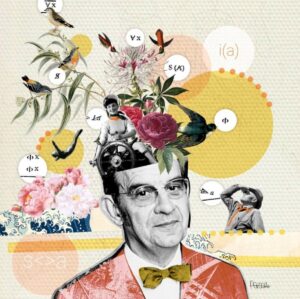
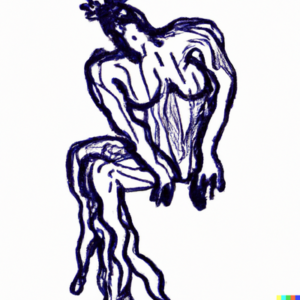

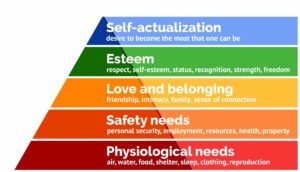
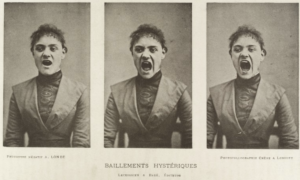







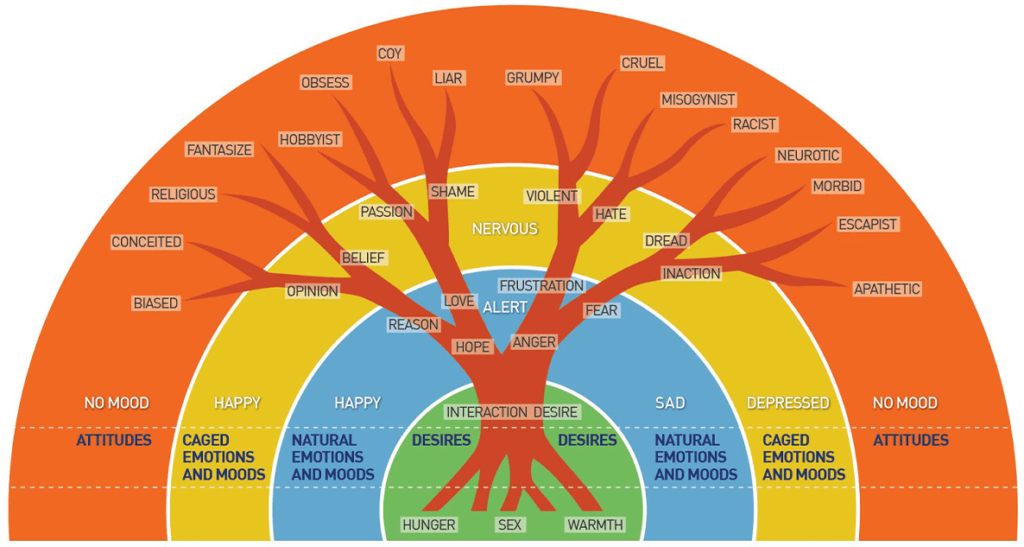


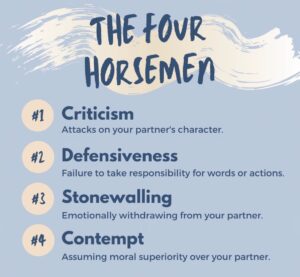
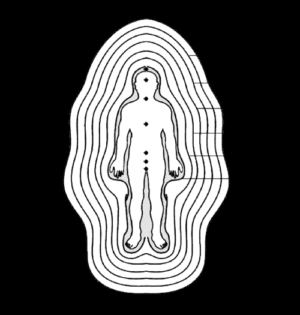
 Rudolf Otto’s pioneering studies on religious consciousness and the experience of the transcendent, as detailed in his classic work, “The Idea of the Holy,” has some interesting parallels to the principles underlying the Enneagram. Through Otto’s nuanced understanding of the numinous experience and its two poles, “Mysterium tremendum” and “Mysterium fascinans,” we can draw insightful connections with the nine points of the Enneagram.
Rudolf Otto’s pioneering studies on religious consciousness and the experience of the transcendent, as detailed in his classic work, “The Idea of the Holy,” has some interesting parallels to the principles underlying the Enneagram. Through Otto’s nuanced understanding of the numinous experience and its two poles, “Mysterium tremendum” and “Mysterium fascinans,” we can draw insightful connections with the nine points of the Enneagram. 

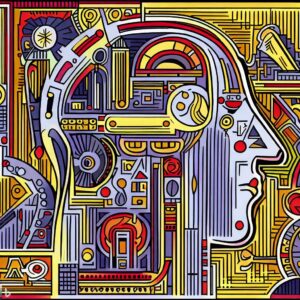


 According to psycho-spiritual ideas each human personality type represents a core, or essential state of the soul that represents our true being and freedom. However, this state is often perceived as lost or disconnected in childhood due to various environmental and psychological factors.
According to psycho-spiritual ideas each human personality type represents a core, or essential state of the soul that represents our true being and freedom. However, this state is often perceived as lost or disconnected in childhood due to various environmental and psychological factors.






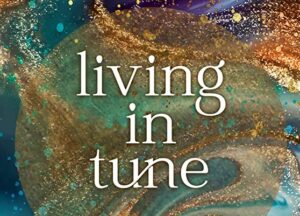 Perhaps one way to bring ourselves into greater alignment throughout the day is to simply check-in with ourselves for a couple of minutes, starting with our bodies and moving up through our hearts and minds, in order to maintain some kind of balance or equilibrium within these three instincts/spaces.
Perhaps one way to bring ourselves into greater alignment throughout the day is to simply check-in with ourselves for a couple of minutes, starting with our bodies and moving up through our hearts and minds, in order to maintain some kind of balance or equilibrium within these three instincts/spaces.
 Simply put, the Self-Preservation Instinct is the drive for well-being. It is the drive to survive and to work in support of what makes one thrive in both the short- and long-term. As our basic drive of survival, it supplies energy to endure in the face of existential challenges. It is the most compelling and powerful drive, shared by all forms of life, from which the other drives, functions, and capacities of our organism flower.
Simply put, the Self-Preservation Instinct is the drive for well-being. It is the drive to survive and to work in support of what makes one thrive in both the short- and long-term. As our basic drive of survival, it supplies energy to endure in the face of existential challenges. It is the most compelling and powerful drive, shared by all forms of life, from which the other drives, functions, and capacities of our organism flower.

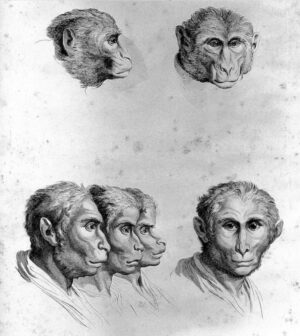


 SELF-PRESERVATION TWOS
SELF-PRESERVATION TWOS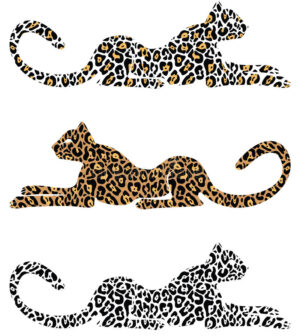 Type Three represents the radiance, self-worth, and inspiration of the awake heart. This type exemplifies the parts of our identity we know and express through actualizing our potential, by turning possibility into actuality and applying our gifts. Threes tend to be very motivated, skillful, goal-oriented, and adaptable. They intuitively see potential and use their considerable gifts, talents, and energy to make sure that potential is realized. Awake Threes are paragons of whatever they strive for. Their innate adaptability lends itself to a range of talents that they combine with a real capacity for ongoing learning and humble self-correction.
Type Three represents the radiance, self-worth, and inspiration of the awake heart. This type exemplifies the parts of our identity we know and express through actualizing our potential, by turning possibility into actuality and applying our gifts. Threes tend to be very motivated, skillful, goal-oriented, and adaptable. They intuitively see potential and use their considerable gifts, talents, and energy to make sure that potential is realized. Awake Threes are paragons of whatever they strive for. Their innate adaptability lends itself to a range of talents that they combine with a real capacity for ongoing learning and humble self-correction. Type Seven represents the versatility and freedom of the awake mind. Sevens tend to be mercurial, spontaneous, optimistic, and experience-oriented. They are in love with possibilities and have a kind of enduring hopefulness and understanding that limitations and difficulties pass to give rise to something new. Sevens are typically up for adventure and tend to jump into new situations with ease.
Type Seven represents the versatility and freedom of the awake mind. Sevens tend to be mercurial, spontaneous, optimistic, and experience-oriented. They are in love with possibilities and have a kind of enduring hopefulness and understanding that limitations and difficulties pass to give rise to something new. Sevens are typically up for adventure and tend to jump into new situations with ease. Type Nine exemplifies the groundedness and connectedness of the Body Center. Nines tend to be natural harmonisers who have a multifaceted, holistic outlook on life that makes them profoundly accepting, curious, and intuitive. Awake Nines are receptive, empathetic, and sensitive as well as deeply engaged and open to life, often combining gentleness with a deep solidity. They can be straightforward and even outspoken, especially in the interest of others. While quite inwardly sensitive, Nines on the outside tend to be easy-going and not easily dismayed by setbacks. Many Nines identify as being spiritual seekers of some kind, and there’s an imaginative, creative, or intellectual side to most Nines.
Type Nine exemplifies the groundedness and connectedness of the Body Center. Nines tend to be natural harmonisers who have a multifaceted, holistic outlook on life that makes them profoundly accepting, curious, and intuitive. Awake Nines are receptive, empathetic, and sensitive as well as deeply engaged and open to life, often combining gentleness with a deep solidity. They can be straightforward and even outspoken, especially in the interest of others. While quite inwardly sensitive, Nines on the outside tend to be easy-going and not easily dismayed by setbacks. Many Nines identify as being spiritual seekers of some kind, and there’s an imaginative, creative, or intellectual side to most Nines.

